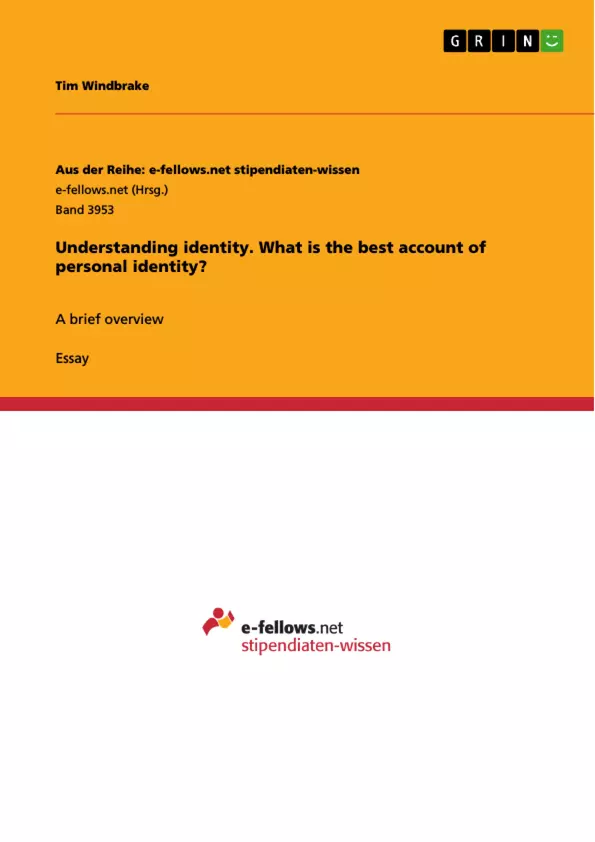The question of personal identity can be spelled out as: "What is a sufficient condition for Person X at time 0 to be numerically identical to Person Y at time 1?". This essay will claim that the best account of personal identity consists of three parts; one pre-condition and two necessary conditions: 1. Identity as an equivalence relation (pre-condition), 2. Memory continuity (necessary condition), 3. Physical continuity (necessary condition)
Generally, people either argue for a pure physical continuity account or a pure psychological continuity account. Both accounts are problematic by themselves for various reasons. This essay tries to synthesize both accounts into one and uses the term of embodied memories to describe this synthesis.
Inhaltsverzeichnis (Table of Contents)
- Pre-condition
- Memory continuity
- Physical continuity
- Objection
Zielsetzung und Themenschwerpunkte (Objectives and Key Themes)
This essay argues that the best account of personal identity consists of three parts: a pre-condition and two necessary conditions. The author aims to synthesize both physical and psychological continuity accounts into one, using the concept of embodied memories. The essay explores the implications of these conditions for understanding numerical identity.
- Equivalence relation of identity
- Memory continuity and its role in personal identity
- Physical continuity and embodied memories
- The relationship between consciousness, unconsciousness, and numerical identity
- The implications of branching and fission for personal identity
Zusammenfassung der Kapitel (Chapter Summaries)
- Pre-condition: This section introduces the logical concept of an equivalence relation of identity and argues that branching is incompatible with this concept. The author demonstrates how the symmetry condition of identity is violated in cases of fission.
- Memory continuity: This section explores the three essential aspects of memory continuity: uniqueness of experience, appropriate memory recall, and the potential for memory connection. The author critiques Shoemaker's general psychological continuity account and emphasizes the importance of memory continuity in defining personal identity.
- Physical continuity: This section utilizes Parfit's teletransportation example to argue that physical continuity is a necessary condition for numerical identity. The author posits that embodied memories are the key to tracing numerical identity and can only be stored in the essential parts of the biological brain.
- Objection: This section addresses an objection to the account, specifically focusing on the implications for numerical identity during and after unconsciousness. The author clarifies that while the brain still processes information during unconsciousness, it does not create conscious memories, thus maintaining personal identity.
Schlüsselwörter (Keywords)
This essay explores the concept of personal identity through the lens of numerical identity, memory continuity, physical continuity, embodied memories, consciousness, unconsciousness, branching, fission, and the equivalence relation of identity.
- Quote paper
- Tim Windbrake (Author), 2020, Understanding identity. What is the best account of personal identity?, Munich, GRIN Verlag, https://www.grin.com/document/1128115



